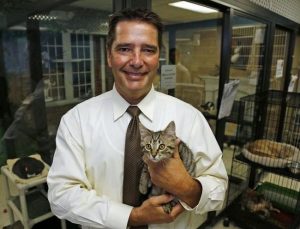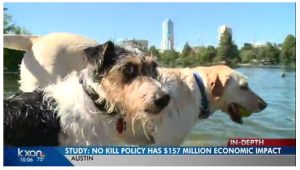Module 7: Get to Know a Shelter
Animal Shelters: Community Service or Competition?
There is a trend for both municipal and non-profit animal shelters to expand their services to better defend animal welfare, protect public health, and reach more underserved communities. Similarly, shelters are becoming more transparent about their intake and outcome statistics and the services they provide both within the shelter and in the community.
Vaccine clinics, spay-neuter outreach, and subsidized low-cost veterinary hospitals play an essential role in minimizing the number of homeless animals born, relinquishment due to the rising costs of veterinary care, and economic euthanasia. Local and statewide restrictions on pet store retail sale of puppies and kittens address concerns about conditions in high-volume breeding establishments (sometimes referred to as puppy mills) and competition for homes in communities that are already overpopulated with homeless animals.
The increase in these community services and animal protections provided by shelters and nonprofit organizations have sometimes raised concerns about marketplace competition with for-profit businesses.
The American Animal Hospital Association disagreed, and instead leaned into collaborations between the private and nonprofit sectors in its 2024 AAHA Community Care Guidelines for Small Animal Practice. “Veterinary teams want to be able to help every pet that comes through the door, but they’re often constrained by factors out of their control,” wrote AAHA. “What if practices could expand their offerings by collaborating with nonprofit organizations and the community beyond their walls?”
Animals adopted from shelters and rescue groups are now a major source of new pets and new veterinary clients. These pets generate an average of $12,357 apiece in veterinary and retail expenditures during their lifetimes, demonstrating that saving pets in shelters and underserved communities is both good for families and good for business. An economics study from Florida Southern College found that the non-profit animal shelter SPCA Florida in Polk County generated $5.7 million in annual economic impact in their local community, including more business for local veterinarians and cost savings at the local government shelter. And another report found that the drive to eliminate unnecessary euthanasia resulted in an infusion of more than $150 million into Austin’s economy.

SPCA Impact Reaches Far and Wide
Editorial
Take a trip to the SPCA Florida’s kennels on Brannen Road and we can guarantee the eager and warm reception from its furry, four-legged tenants will melt your heart, at least a little. But as much as the SPCA can provide joy from such a visit, or even better by finding someone a new pet, we now know the facility helps grease the skids of the local pet-centric economy.
Charles DuVal, director of Florida Southern College’s MBA program, and a team of students recently completed a study outlining the SPCA’s economic impact within and beyond Polk County. That amounted to $71 million from 2010 through 2015, or $12 million a year. Translated differently, the study concluded that each dollar spent at the SPCA returns $1.67 to the local economy. Read more . . .

New study: Austin’s ‘No Kill’ Policy Has $157 Million Economic Impact
By Kylie McGivern
A newly released study from the University of Denver claims, between 2010-2016, Austin’s “No Kill” policy has helped drive Austin’s economy to the tune of $157 million.
WaterShed Animal Fund, based in New York, paid for the study that’s said to represent the most comprehensive analysis so far of the impacts of Austin’s resolution that designated the city as “no kill” in its animal shelters.
The 69-page study states, “The majority of the positive economic impacts result from increased employment within animal services as well as the increased use of pet care and pet retail services. An additional benefit appears to be the positive contribution of Austin’s progressive animal welfare policies to its brand equity. This impact is important as municipalities compete with each other to attract employee demographics that in turn draw new business and new economic growth to their area.” Read more . . .
Think About It

